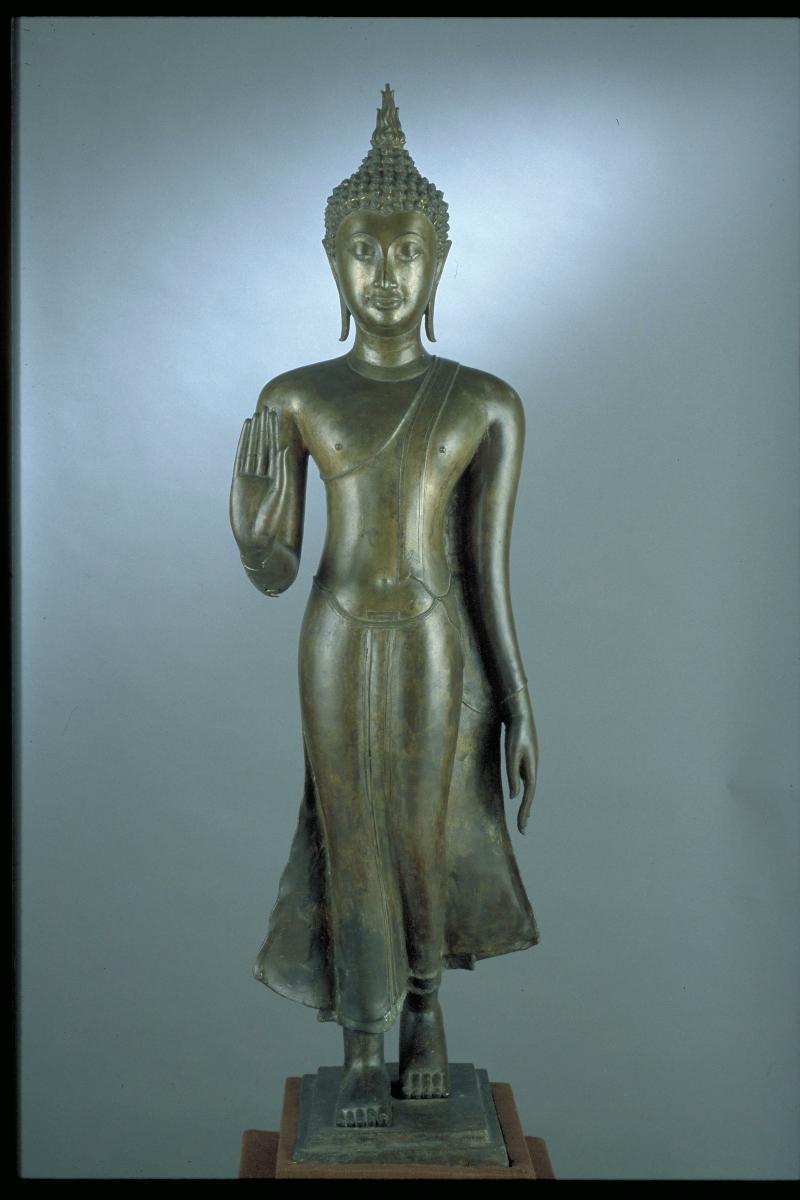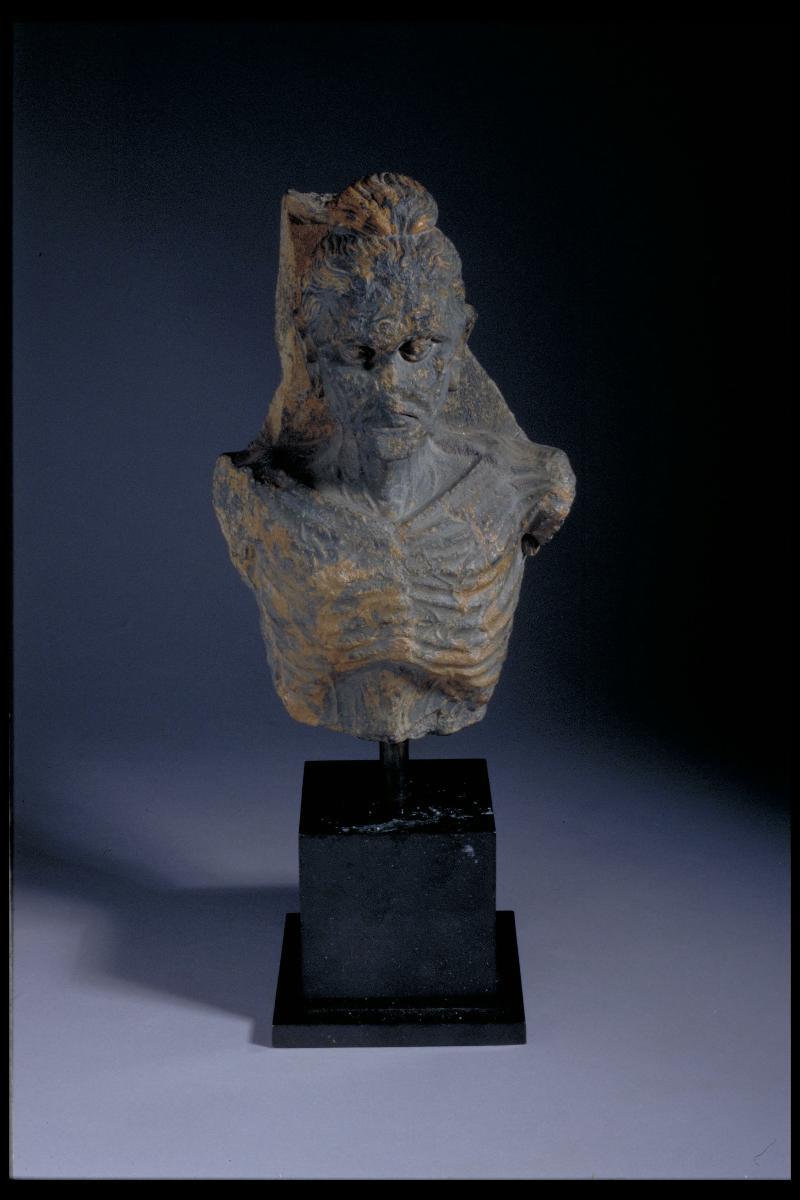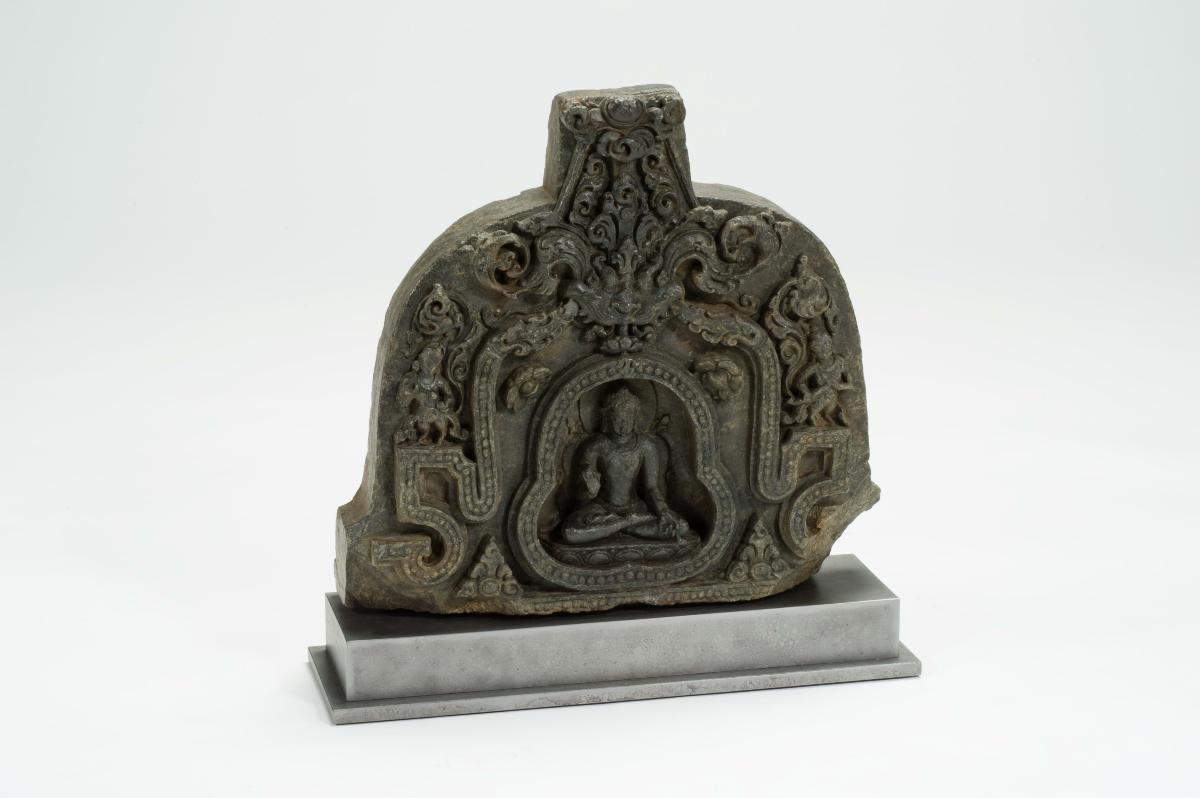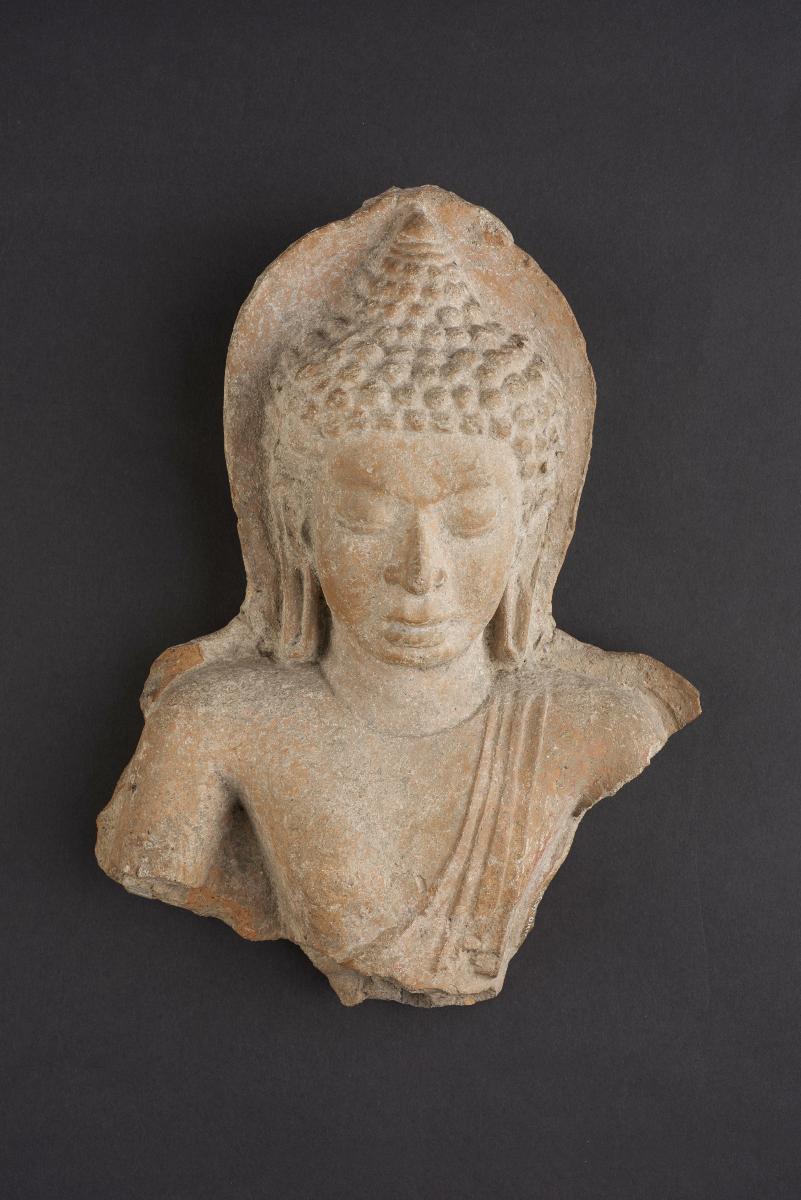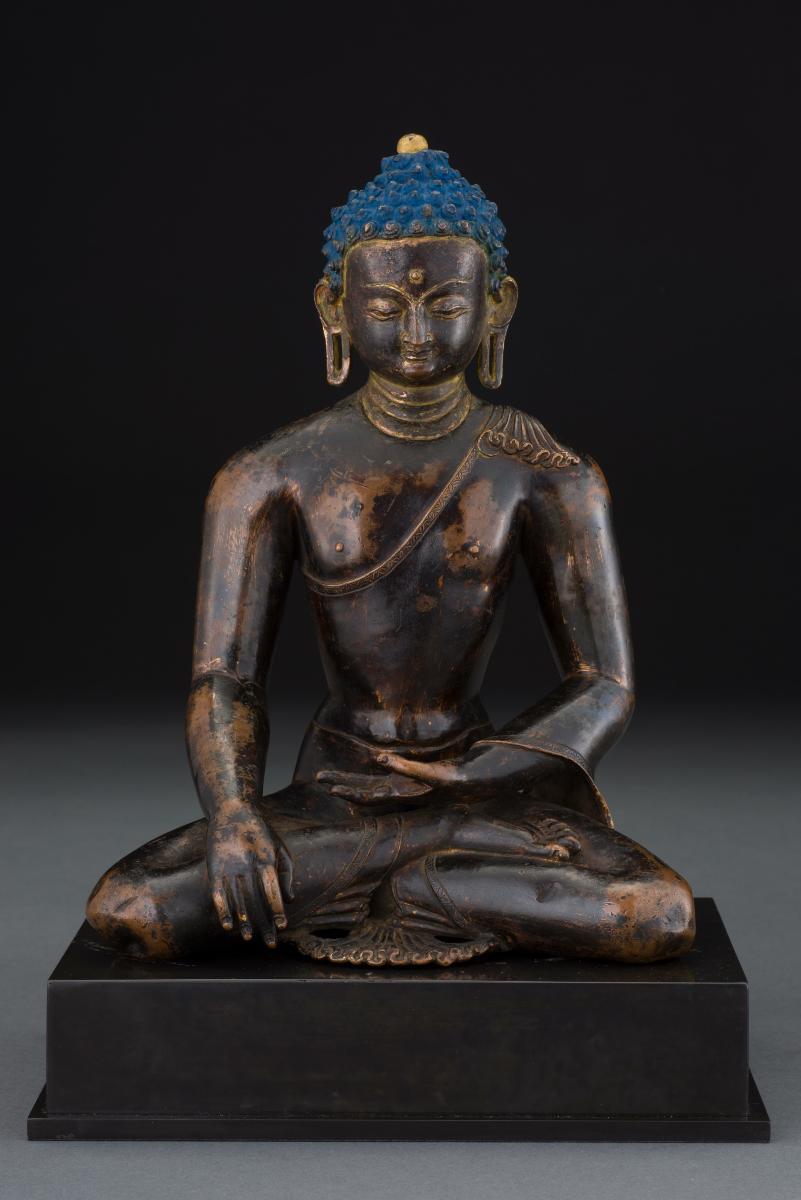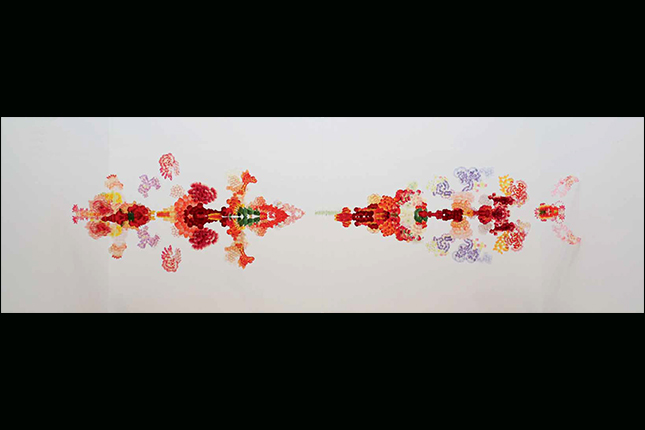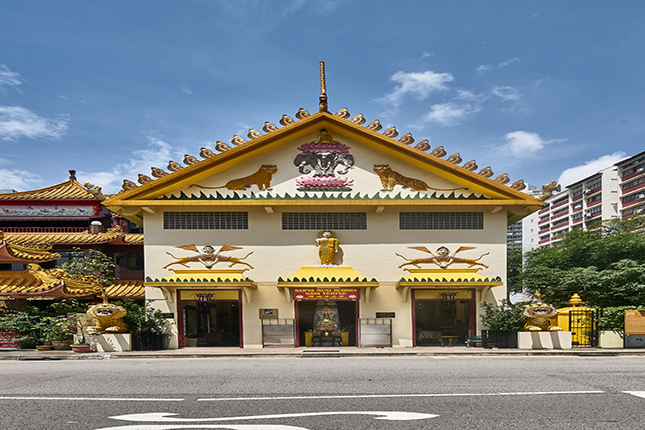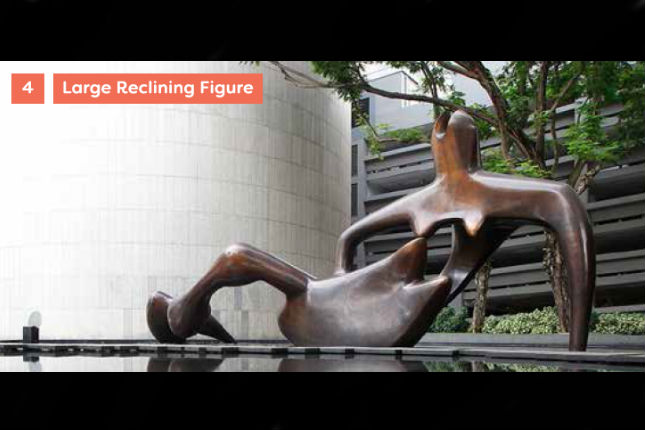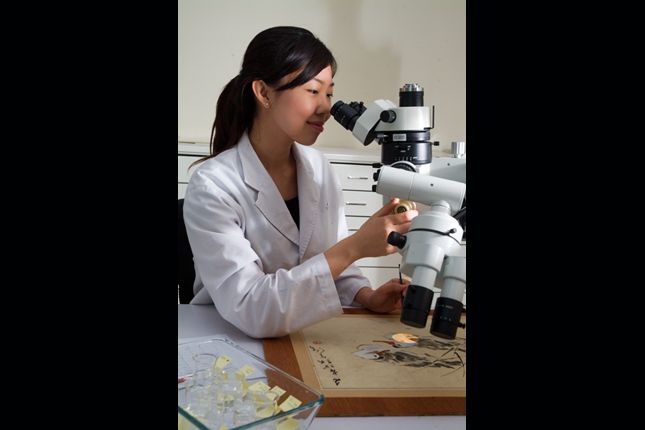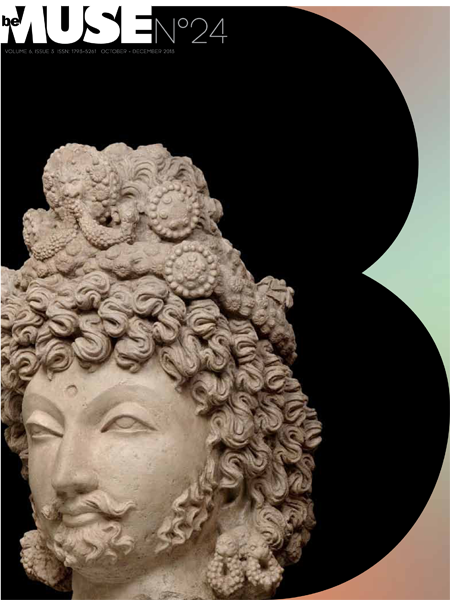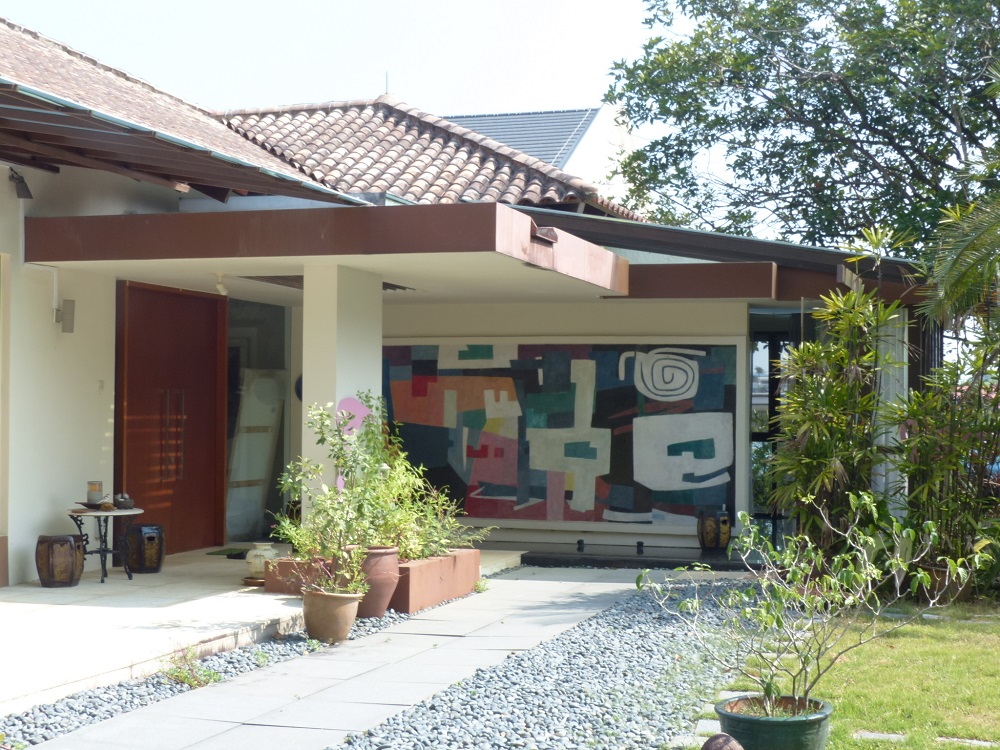This image of the Walking Buddha or 'cankrama' (‘walking back and forth’) is a classic image of the Sukhothai period (1200-1350). He is depicted in mid-stride, his right foot forward, and right hand in 'abhaya' mudra (gesture of fearlessness, a hand gesture where the right hand is held upright with the palm facing outward). The left arm curves to accentuate the sense of fluid movement. The robe is barely visible except for fine outlines, and a flowing hemline. The 'ushnisha', or bump on the head which symbolises his Enlightenment, rises to a flamed 'cintamani' or top-knot.Images of the Buddha were made for temples by donors in the belief that they would acquire merit for their next life. This image has been interpreted in various ways. It is thought to refer to Buddha’s return from Tavatimsa Heaven where he preached the doctrine to his mother, and is also associated with meditation and magical powers, as found in stucco reliefs at temples in Sukhothai and the twin town of Si Satchanalai. The origins of the Walking Buddha remain unclear and the dating of several images continues to be questioned. More recently it was proposed that the city of Sukhothai was not abandoned in 1438 with the rise of Ayutthaya, but instead flourished until 1786 and that many architectural images of the Walking Buddha were probably produced during the 18th century .




